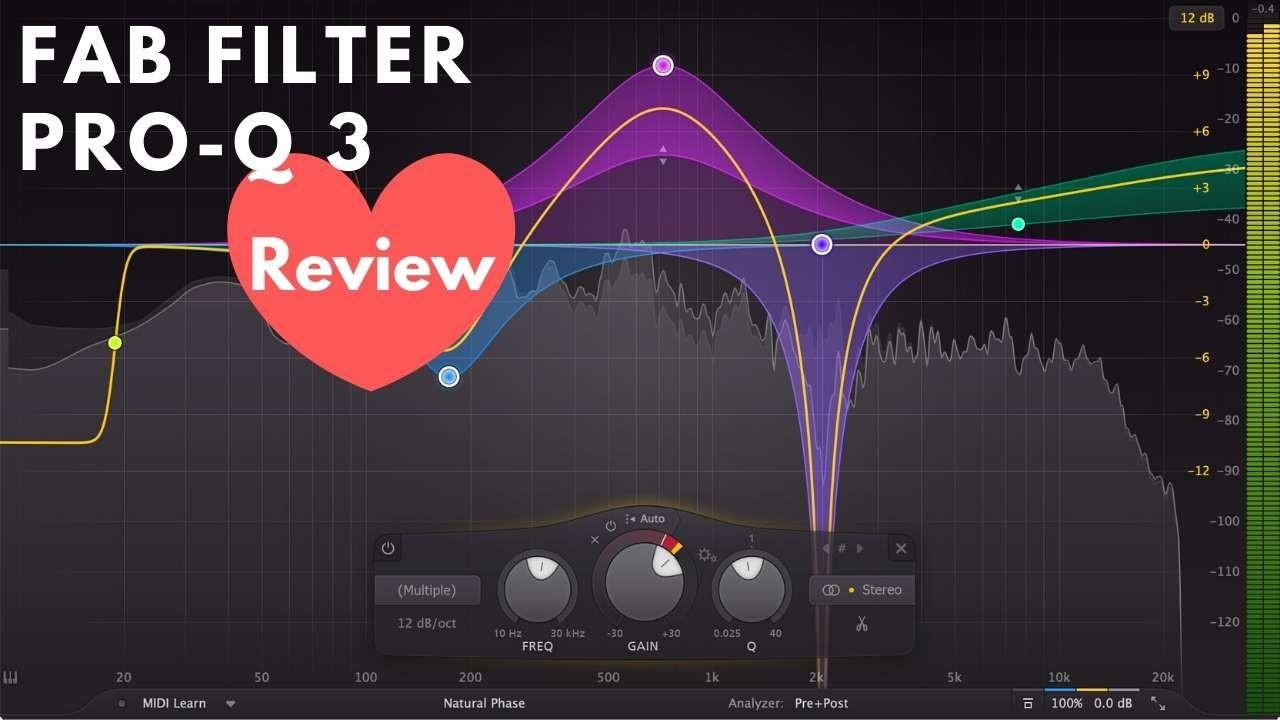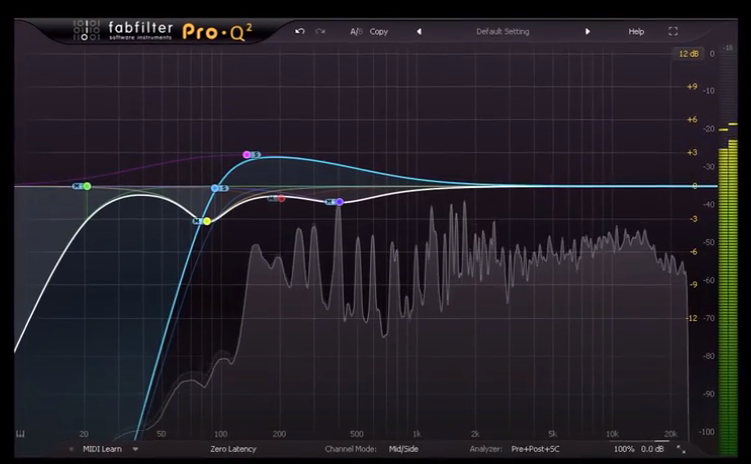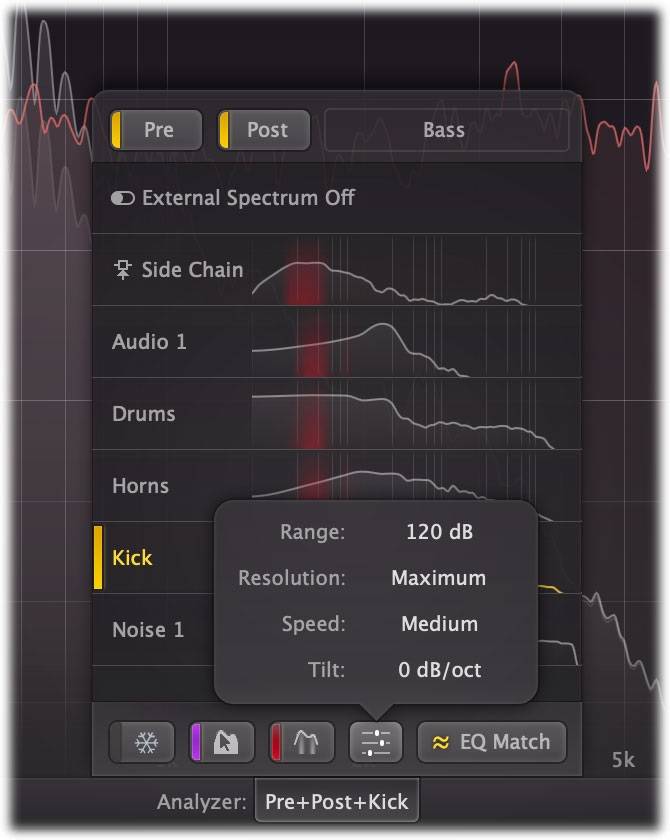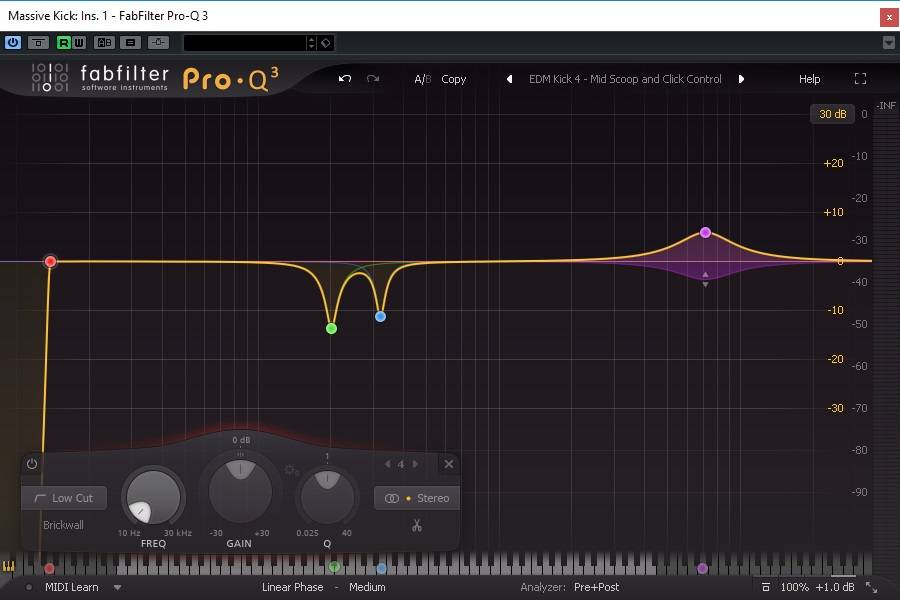
 Zero Latency mode is Pro-Q 3’s most efficient processing mode and absolutely sufficient for most applications, as stated on FabFilter’s official website. So these processing modes are basically responsible for different kinds of phase distortions. If the phase distortion is equal at all frequencies, it is linear else, it is non-linear. Phase distortion occurs when an audio signal is equalized. Without getting too technical, I will try to explain these modes’ purposes and how they differ. Pro-Q 3 offers three processing modes, Zero Latency, Natural Phase, and Linear phase mode. Then we can select a reference Pro-Q 3 instance or any side chain as a reference.Īnd finally, selecting “ Match ” to automatically create nodes to match the reference EQ.Ī slider will allow us the fine-tune the algorithm. We can toggle it by pressing “ EQ Match ” in the analyzer pop-up menu. It is beneficial where we need to match a reference signal acoustically. This allows us to automatically match the spectrum of the current instance to another instance of Pro-Q 3 or any side-chained signal. Although the results are not perfect, it is a beneficial tool to analyze your decisions quickly. The EQ will gain match the output signal volume to the input signal volume in real-time while you are making changes to the sound. To counter this, typically, we have to gain match the output signal after all the processing manually, but Pro-Q 3 has a better solution called “ Auto gain. Let’s say you made a lot of boosts or cuts using the EQ, and now you’re not sure whether the changes you made actually made the sound better or you are just being fooled by the change in volume. So, in this case, we can easily sculpt the bass frequencies to make way for the kick to shine. By turning on these features on the bass instance and selecting the kick instance in the analyzer tab, we can see the kick’s visual spectrum on this instance, and the red-colored areas would be the problematic regions. The first will allow us to view the visual spectrum of any instance of Pro-Q 3 on another, so we can manually identify where the frequencies might be conflicting, but collision detection makes it easier to identify the conflicting frequency region by turning them red.įor example, we have an instance of Pro-Q 3 on a bass track and another on the kick track.
Zero Latency mode is Pro-Q 3’s most efficient processing mode and absolutely sufficient for most applications, as stated on FabFilter’s official website. So these processing modes are basically responsible for different kinds of phase distortions. If the phase distortion is equal at all frequencies, it is linear else, it is non-linear. Phase distortion occurs when an audio signal is equalized. Without getting too technical, I will try to explain these modes’ purposes and how they differ. Pro-Q 3 offers three processing modes, Zero Latency, Natural Phase, and Linear phase mode. Then we can select a reference Pro-Q 3 instance or any side chain as a reference.Īnd finally, selecting “ Match ” to automatically create nodes to match the reference EQ.Ī slider will allow us the fine-tune the algorithm. We can toggle it by pressing “ EQ Match ” in the analyzer pop-up menu. It is beneficial where we need to match a reference signal acoustically. This allows us to automatically match the spectrum of the current instance to another instance of Pro-Q 3 or any side-chained signal. Although the results are not perfect, it is a beneficial tool to analyze your decisions quickly. The EQ will gain match the output signal volume to the input signal volume in real-time while you are making changes to the sound. To counter this, typically, we have to gain match the output signal after all the processing manually, but Pro-Q 3 has a better solution called “ Auto gain. Let’s say you made a lot of boosts or cuts using the EQ, and now you’re not sure whether the changes you made actually made the sound better or you are just being fooled by the change in volume. So, in this case, we can easily sculpt the bass frequencies to make way for the kick to shine. By turning on these features on the bass instance and selecting the kick instance in the analyzer tab, we can see the kick’s visual spectrum on this instance, and the red-colored areas would be the problematic regions. The first will allow us to view the visual spectrum of any instance of Pro-Q 3 on another, so we can manually identify where the frequencies might be conflicting, but collision detection makes it easier to identify the conflicting frequency region by turning them red.įor example, we have an instance of Pro-Q 3 on a bass track and another on the kick track.  External Spectrum Visualization and Collision Detection. All these analyzers and features can be toggled using the “Analyzer” pop-up menu.
External Spectrum Visualization and Collision Detection. All these analyzers and features can be toggled using the “Analyzer” pop-up menu. 
Pre-EQ and Post-EQ analysis are pervasive in many EQs, but Pro-Q 3 stole the show with its external spectrum visualization and collision detection. (fig a1, fig a2)Īn excellent built-in spectrum analyzer with Pre-EQ, Post-EQ, external spectrum visualization, and collision detection is available. The ultra-steep ‘Brick-wall’ slope setting for low pass and high pass filters is the highlight. In addition to standard Bell, Notch, High/Low Shelf, High/Low Cut, Band Pass filters, Pro-Q 3 also offers Flat Tilt and Tilt Shelf filters that can be used to tilt the spectrum around a specific frequency with or without using a flat curve respectively. Bands can be placed just by double-clicking anywhere on the visual spectrum. The capability of using up to 24 bands in one instance is more than enough, even in very complex surgical operations. Pro-Q 3 offers fantastic sound quality and does not color the sound, thus staying extremely transparent. I will try to answer all these questions in this post.

Will it be any better than the stock EQ in my DAW?.Here they are again with yet another show stopper, “Pro-Q 3”, with a familiar design but packing many more features under the hood.Ī lot of questions come to mind whenever one considers buying a plugin: FabFilter is known for making visually detailed and impressive-sounding plugins with easy-to-use interfaces.








 0 kommentar(er)
0 kommentar(er)
